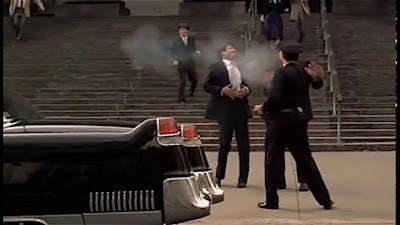The baptism scene in The Godfather (1972) is one of the most powerful and iconic moments in film history. Directed by Francis Ford Coppola, this climactic sequence intertwines a sacred religious ritual with brutal mob violence, perfectly capturing the duality of Michael Corleone’s character. As he renounces Satan in church, his enemies are being ruthlessly murdered on his orders. This chilling contrast has become a symbol of the corruption of power and the moral decay at the heart of the Corleone family's rise.
Michael Corleone’s Transformation
The baptism scene marks the point where Michael Corleone fully transforms from a reluctant war hero into the cold and calculating Godfather. Earlier in the film, Michael is portrayed as separate from the family's criminal activities. However, by the time of the baptism, he has orchestrated a series of strategic killings to eliminate all rivals and consolidate his power.
As he stands in the church as godfather to his nephew, Michael publicly upholds Catholic values. Simultaneously, hitmen carry out his brutal revenge against the heads of the Five Families and traitors like Moe Greene and Carlo Rizzi. This moral contradiction is key to understanding Michael Corleone’s character arc and the film’s central themes of power, loyalty, and betrayal.
Symbolism and Irony
The scene is rich in symbolism and dramatic irony. The sacred rite of baptism, traditionally a moment of spiritual purity and rebirth, is juxtaposed with images of death and bloodshed. Coppola uses cross-cutting editing to build tension and highlight the duality of Michael’s actions. The organ music swells as Michael utters the words “I do” in response to renouncing evil—while his enemies are gunned down in cold blood.
This sequence is a commentary on how the institution of religion can be manipulated to mask immoral deeds. It also reflects the broader theme of appearances versus reality that runs throughout The Godfather.
Cinematic Legacy
The Godfather baptism scene is widely regarded as a masterclass in film editing, direction, and storytelling. It has influenced countless directors and is often cited in discussions of the greatest scenes in cinema. It encapsulates what makes The Godfather such a powerful film—its ability to blend beauty and brutality, faith and corruption, all within a single, unforgettable sequence.







Comments
Post a Comment